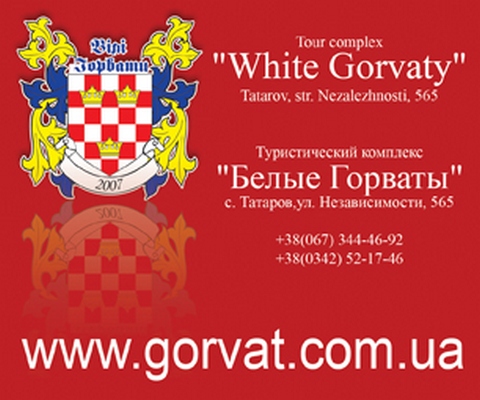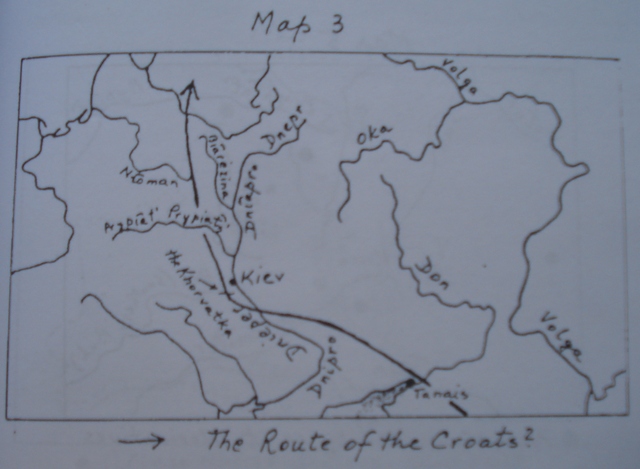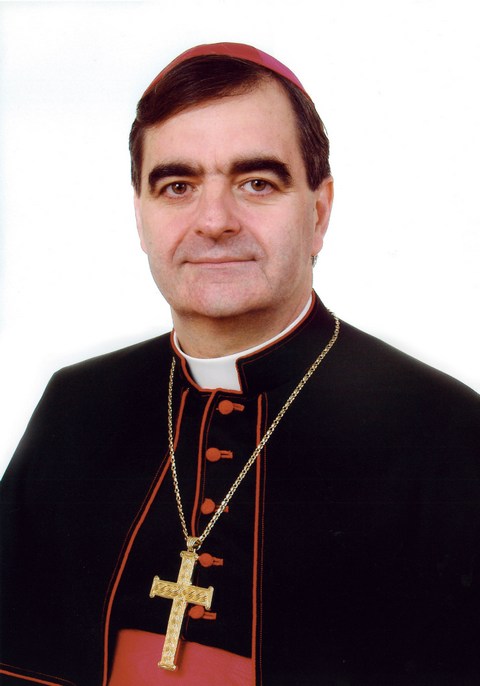| | Croatian-Ukrainian ties are very old. The so called White Croatians originate from the western part of Ukraine. It is no surprise that, for example, the Ukrainian traditional art and the architecture of wooden churches are close to that of the north of Croatia. In 2010 a nice monument was erected in honor of distinguished Ukrainian writer Ivan Franko in Croatian town of Lipik, who spent a few years in Croatia. Ukraine was the first country which, as a member of the UN, recognized the Republic of Croatia. On the photo one can see Croatian and Ukrainian Easter eggs, decorated by Annette Hricko Czupylo, an Ukrainian living in the USA. |
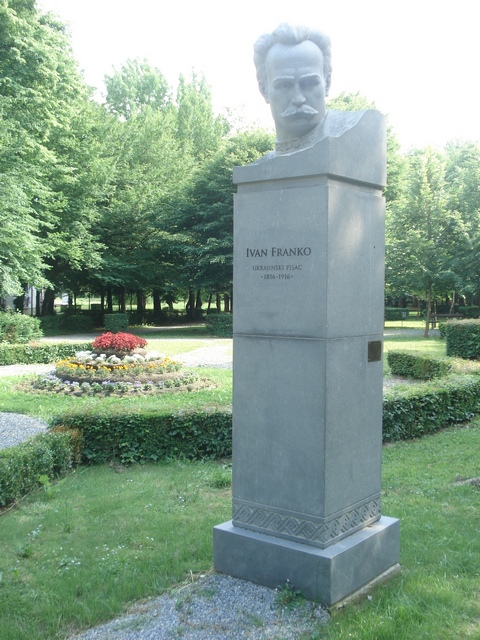
Ivan Franko, Ukrainian writer, 1856-1916, spent a few years in Croatia, in the towns of Lipik and Lovran.
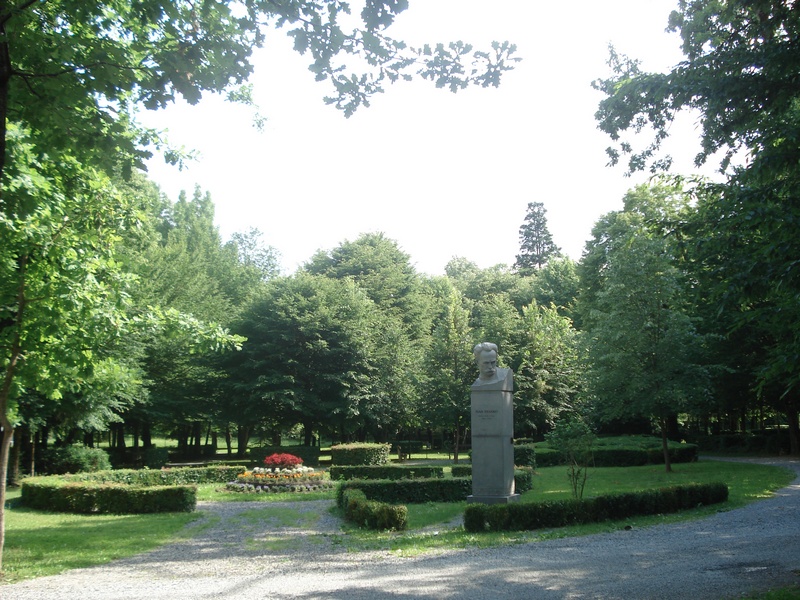
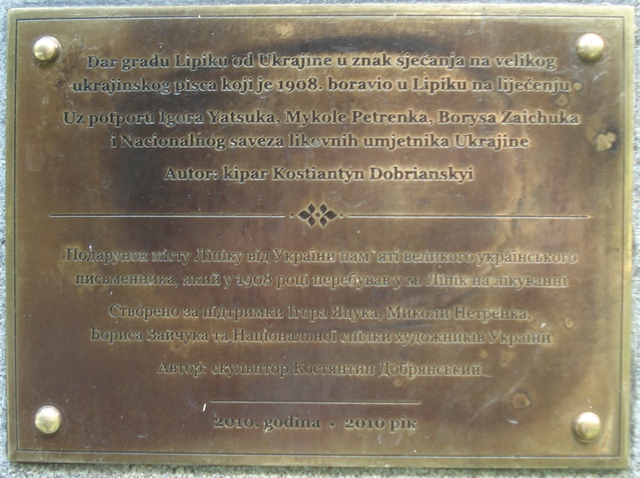
 Memorial plaque on the monument in Lipik, Croatia, erected to honor Ivan Franko.
Hrvoje Kačić: Horvatskij proriv (Croatian Advancement, in Ukrainian), translated from Croatian by and with the foreword of Rev. Oleh Hirynik, Ukraine, Tempora, Kiev 2013.
Article about the book written by Oleh Hyrnik, in Croatian
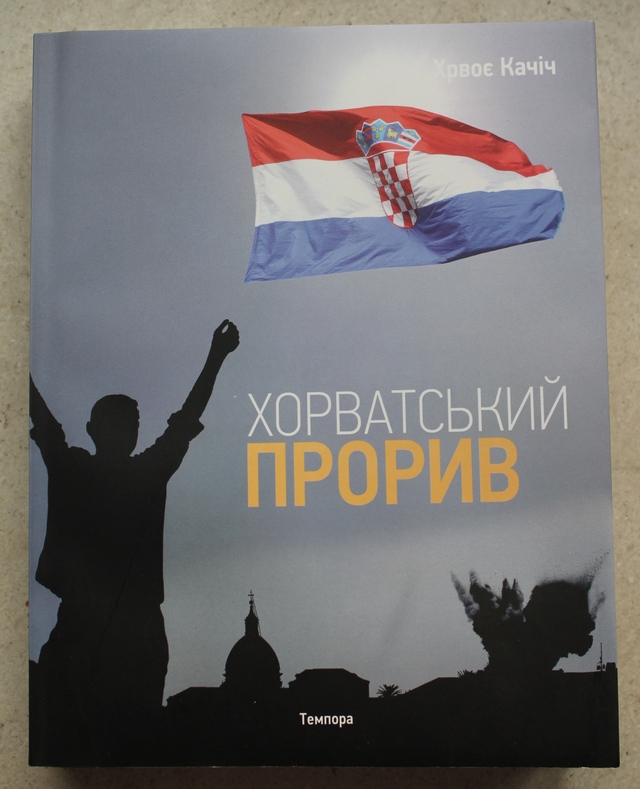
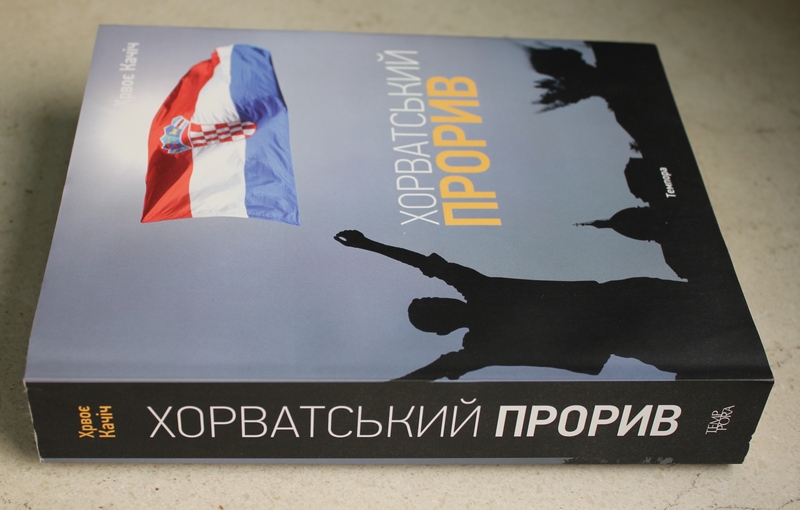
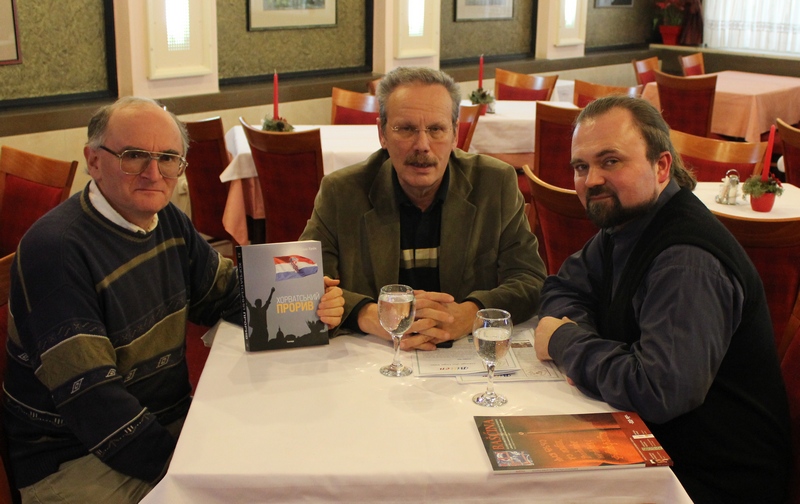
Darko Žubrinić s knjigom Horvatskij proriv Hrvoja Kačića na ukrajinskom, prof.dr. Krešimir Ćosić, hrvatski general,
i g. Oleh Hirnyk, MSc., prevoditelj knjige s hrvatskog na ukrajinski jezik, i pisac pregovora.
Oleh Hirnik: Ukrajinski prijevod Kačićeve knjige âU službi domovine"
Savez Rusina i Ukrajinaca Republike Hrvatske
Bili Gorvati is a tourist resort in Ukraine in the town of Tatariv south of the city of Ivano-Frankivsk. Many thanks to Mrs. Olena Belej, Ukraine, for this information.
Please, note that the meaning of Bili Gorvati is literally White Croats!
Ukrainian and Croatian Easter Eggs
Pisanice - Pisanki , 2010 CROWN
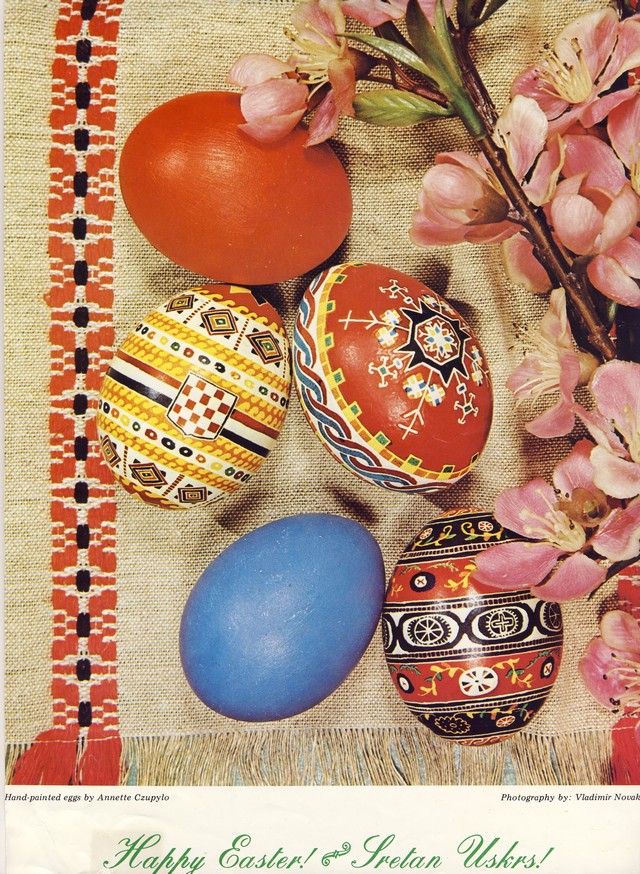
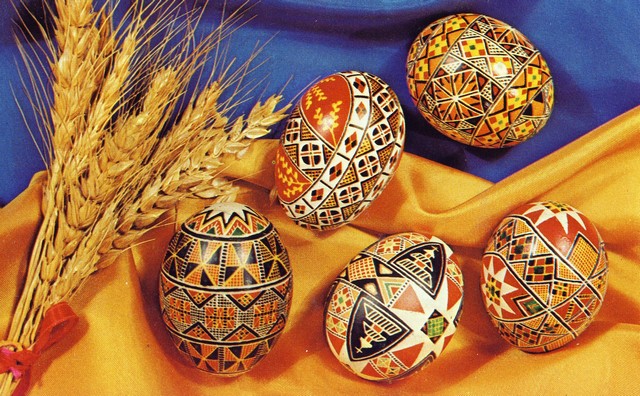
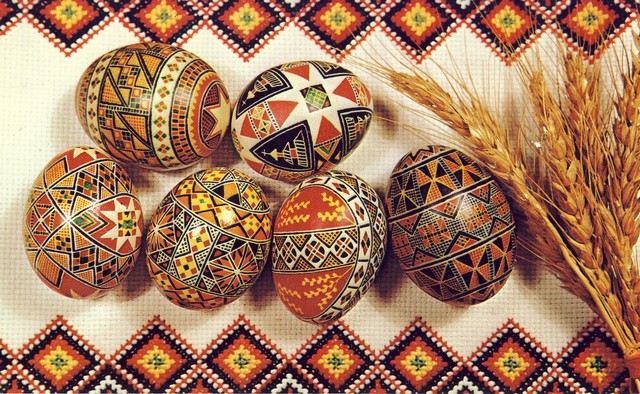
Ukrajinske pysanky, izradila Annette Hricko Czupylo, foto Vladimir Novak
"ĐипОвНŃĐ˝ŃŃĐşŃ ĐиŃанки " - Lipovljanske Pisanice - [PDF] - [Lemko Easter Eggs from Lypovliany, Croatia]
Aleksa Pavleshin. Zagreb, Croatia. 2009.
"Mali Rjecnik Lemkivskog Govora Ukrainskog Jezika" [PDF] - Small Lemko-Ukrainian-Croatian Dictionary.
Aleksa Pavleshin. Zagreb, Croatia. 2007.
Narodne nošnje
Drvene crkve vrlo slične kao u Ukrajini
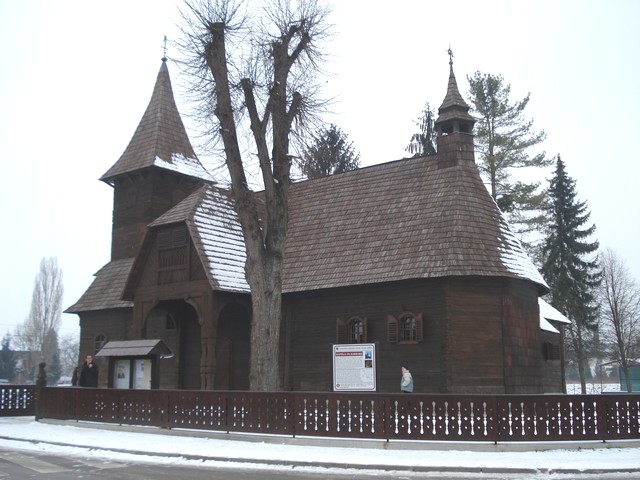
Rimokatolička crkva sv. Barbare kod Zagreba, 17. st.
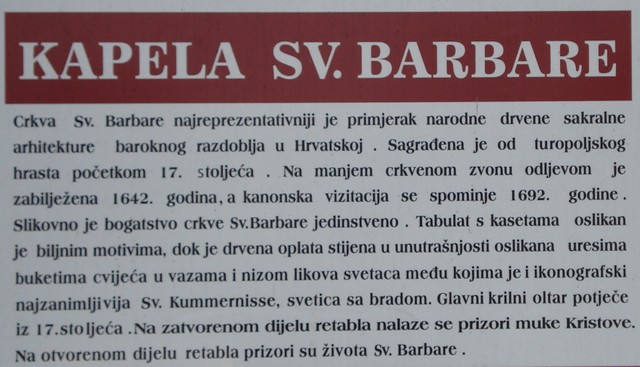
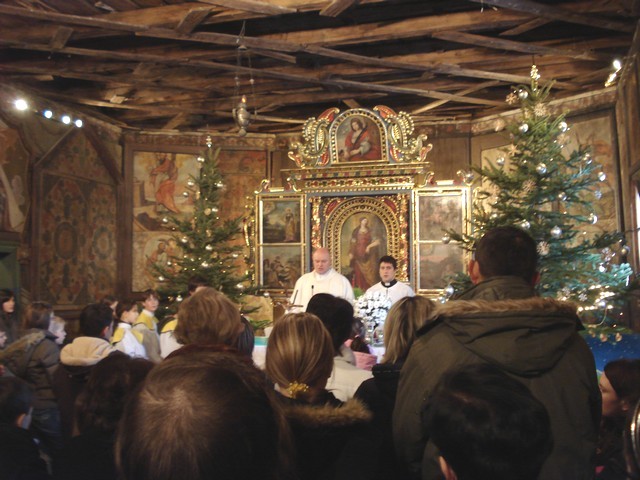
Unutrašnjost crkve sv. Barbare kod Zagreba za vrijeme svečane nedjeljne mise.
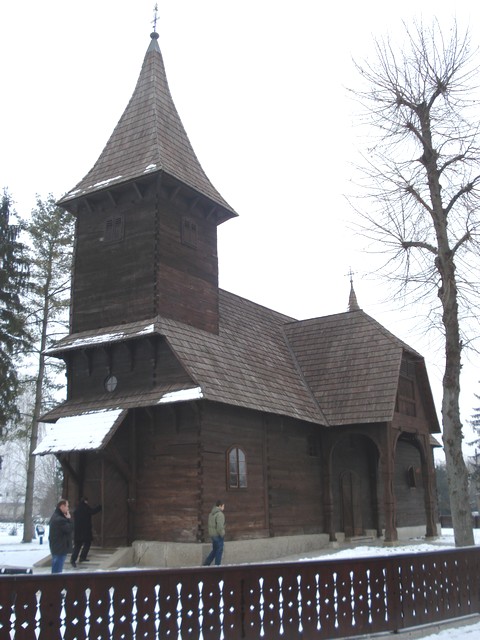
Pogledajte veoma slične drvene crkvice u Ukrajini, iz sličnog razdoblja, 17.-18. st. Zahvaljujem g. Olehu Hirniku na informaciji.
Narodna glazba (osobito Međimurje) i narodne nošnje
Grkokatolici u Hrvatskoj
Dr. Ljudevit Jurak, Vinice u Ukrajini 1943.
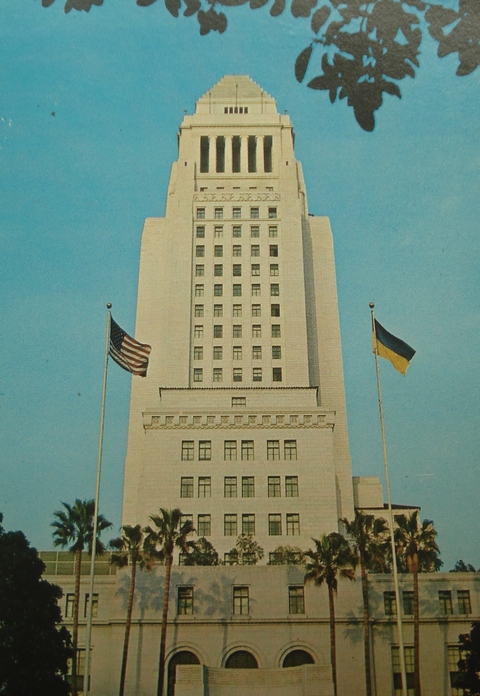
City Hall in Los Angeles, USA, 1967, with flags of USA and Ukraine, on a postcard made by Mr. Vladimir Novak
Photo by the courtesy of Mr. Vladimir Novak, Croatia / USA.
(Gradska vijećnica u Los Angelesu, SAD, 1967, s američkom i ukrajinskom zastavom, na razglednici g. Vladimira Novaka.
Fotografija ljubaznošću g. Vladimira Novaka, Hrvatska / SAD)
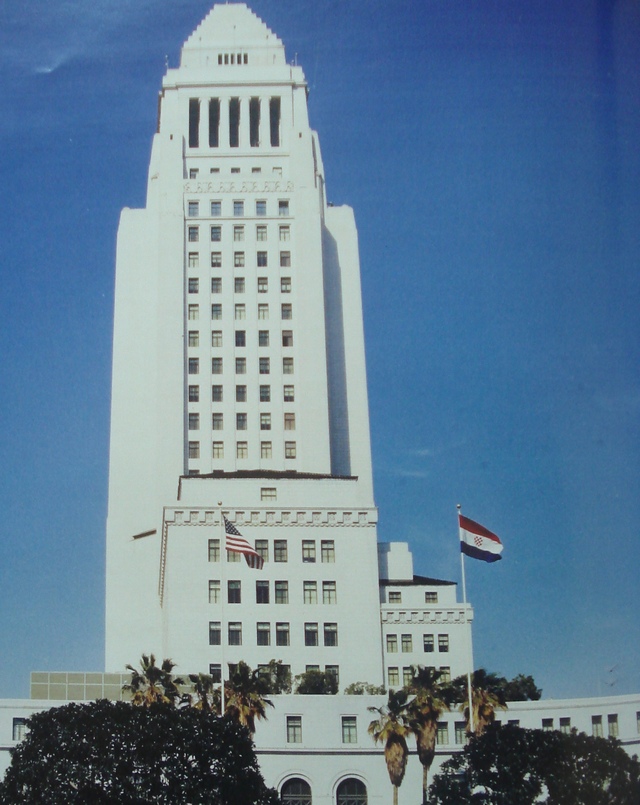
City Hall in Los Angeles, USA, 1967, with flags of USA and Croatia.
Photo by the courtesy of Mr. Vladimir Novak, Croatia / USA.
(Gradska vijećnica u Los Angelesu, SAD, 1967, s američkom i hrvatskom zastavom.
Fotografija ljubaznošću g. Vladimira Novaka, Hrvatska / SAD)
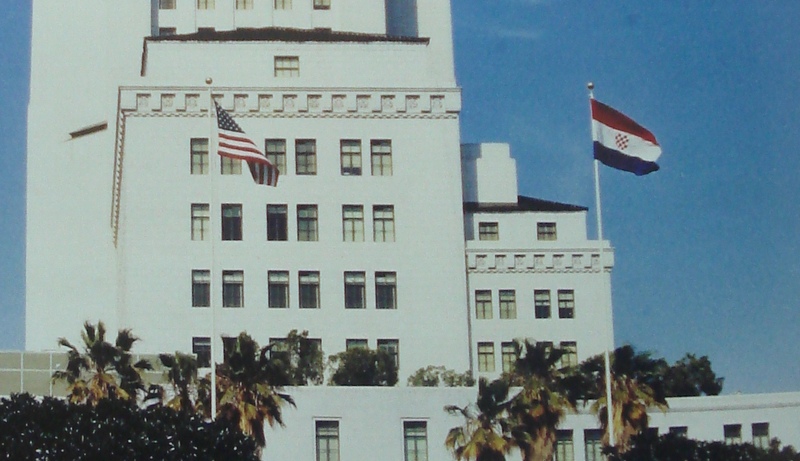
City Hall in Los Angeles, USA, 1967, with flags of USA and Croatia; a detail.
Photo by the courtesy of Mr. Vladimir Novak, Croatia / USA.
(Gradska vijećnica u Los Angelesu, SAD, 1967, s američkom i hrvatskom zastavom; pojedinost.
Fotografija ljubaznošću g. Vladimira Novaka, Hrvatska / SAD)
Miro Gavran je najprevođeniji (35 jezika) i najizvođeniji hrvatski dramski pisac. Neka njegova djela prevedena su i na ukrajinski jezik:
- Sve o ženama, žurnal "Mlada Ukrajina", br.1, Kyjiv, Ukrajina, 2003-
- Pacijent doktora Freuda, žurnal "Mlada Ukrajina", br.1, Kyjiv, Ukrajina, 2003.
Ukrajinska ulica u Zagrebu
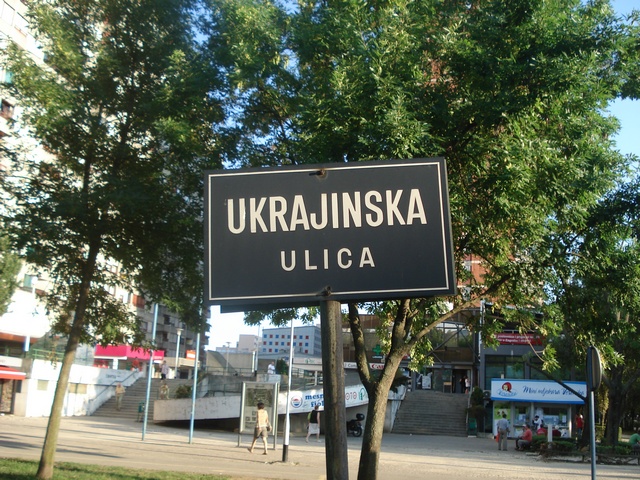
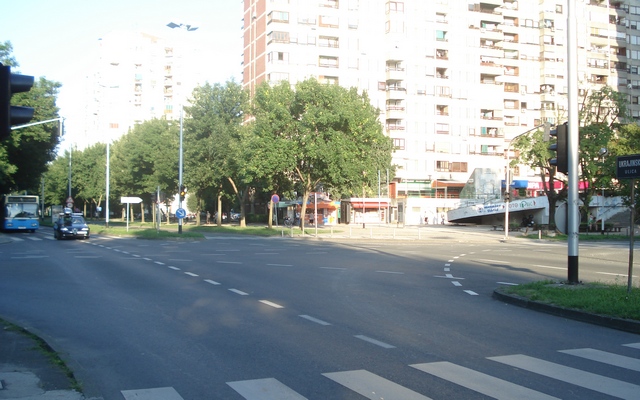
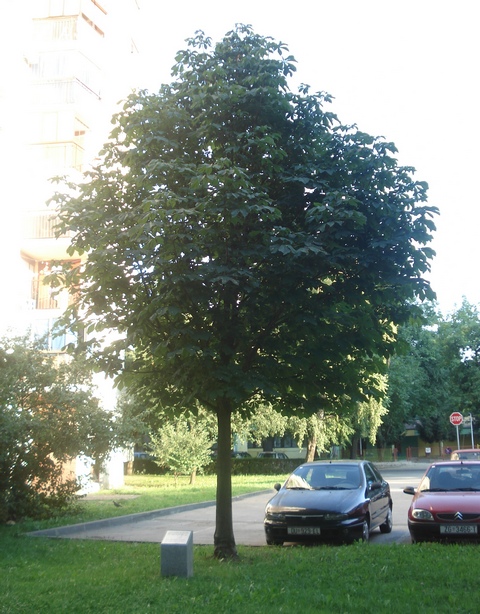
The Chestnut Tree of Friendship between Ukraine and Croatia, 2001, in Ukrainian street in Zagreb.
Drvo prijateljstva između Ukrajine i Hrvatske, 2001., u Ukrajinskoj ulici u Zagrebu.
Kesten je donesen iz Ukrajine.
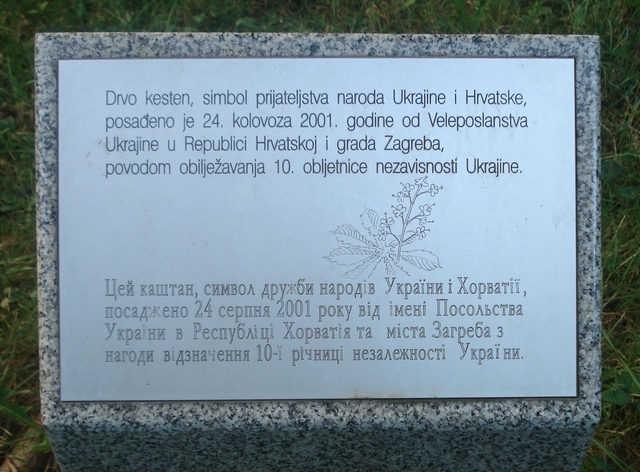
The name of the Croats is met in many places throughout Ukrainian soil. It is contained in Ukrainian written documents since the 2nd century until the end of the 10th century. The famous Ukrainian chronicler Nestor from Kyiv (in his "Povest vremennyh let", 1113) mentioned also the White Croats inhabiting early-medieval Old-Ukrainian empire, known as the Kyiv Rus'. According to a very old legend, one of the three brothers who founded the Ukrainian capital Kyiv was Horiv, whose name might be at least hypothetically related to the Croatian name: Horvat. See [Hrvatska/Ukrajina], p. 9, and [Pascenko], p. 105. Even today some of the Ukrainian citizens say for themselves to be the White Croats. There are many proofs that the Croats once lived in common with Ukrainian and Slovak people: their language (very widespread ikavian dialects in Croatia and Slovakia, ikavian language in Ukraine), legends, customs, many common toponyms etc.
In central part of Kyiv there are three hills: Starokyivska gora, gora Shchekovitza and gora Horevitza, and even a street Horev (ulica Horeva). The very beginning of Nestor's "Povest Vremennyh let" mentions the above legend: I bysha tri brata: Kij, Shchek i Horev, i sestra ih Lybed'. I sotvorisha grad vo imya brata svoego, i narekoshe ego Kyiv.
Ukrainian archaeologist Dr. Orest Korcinski has undertaken an extensive study of White Croatian site from 8th-11th centuries near the town of Stiljsko, not far from Lviv in Ukraine. He estimates that in the 9th century the Stiljsko archaeological site with environinig settlements had nearly 40,000 inhabitants, more than Kiev at that time! The region of historical Pagania around the Neretva river has many common toponyms and hydronyms with Western Ukraine, like Neretva, Mosor, Ostrozac, Gat. Also Sinj, Kosinj, Kostrena, Knin, Roc, Modrus, and many other throughout Croatia and Western Bosnia. Too many to be just an incidence.
There are numerous names of villages, hills and rivers in Slovakia, Czechia (especially in Moravia), Poland and Ukraine, which have their obvious equivalents in Croatia and Bosnia - Herzegovina. Many of them are indeed surprising:
Bac, Bajka, Baska, Bila, Bistrice, Blatce, Bohdalec, Boskovice, Brezovica, Budin, Budisov, Cehi, Chrast, Chvojnica (= Fojnica), Dol. Krupa, Dolni Lomna, Dolni Domaslovice, Doljani, Doubrava, Doubravice, Doubrovnik, Drienovac, Gat, Harvatska Nova Ves, Hor. Mostenice, Hradec, Hvozd (Gvozd), Javornik, Kal'nik, Klenovec, Klenovice, Klobuky, Kninice, Konice, Koprivnice, Kostelec, Krasno, Kuhinja, Lipa, Lomnice, Ljubica, Mali Javornik, Markusovce, Nova Ves, Novosad, Odra, Okruhlica, Parac, Plesivec, Pohorelice, Porin, Raztoka, Rogatec, Ribnik, Rudina, Selce, Slatina, Sopotnia, Stitary, Sumperk, Tabor, Tajna, Travnik, Trebarov, Trzebinia, Tucapy, Veliki Javornik, Vinica, Vinodol, Vrabce, Vrdy, Vrbovec, Zabreh, Zubak, Zumberk.
The once prosperous and rich Ukrainian village of Horvatka near Kyiv (note well: Horvat = Croat) disappeared overnight in 1937, together with all of its inhabitants, during Stalin's infamous collectivization, sharing the tragic destiny of millions of Ukrainians. The only witness is an innocent brook, called Horvatka, today Hrobatka (Hrovatka), about 70 km south of Kyiv. See "Marulic", 1998/2, p. 263, and also [Pascenko], p. 293. On the brook of Hrovatka (~30 kms long right confluent of Dnipro) there is a village bearing the same name Hrovatka, personal information (2010) by mr. Djuro Vidmarovic, former Croatian ambassador to Ukraine In the 1990s in Kyiv, Ukraine, a youth organization of scouts was founded, and named - White Croat (Bili Horvat; reported by Croatian ambassador Gjuro Vidmarovic in 2000)!
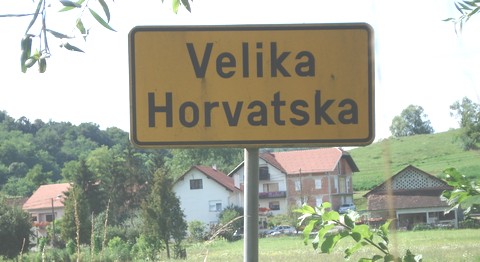
On the north of Croatia's captial there is a very small village called Velika Horvatska (Great Croatia!), and a small brook bearing the name Horvatska. It reminds us about existence of White Croatia. We find it pertinent to mention that we know of several cases during former Yugoslavia in which young Croatian soldiers were not allowed by Serbian officers to declare that they were born in the village called Velika Horvatska, but were pressed to declare a nearby village Zbilj.
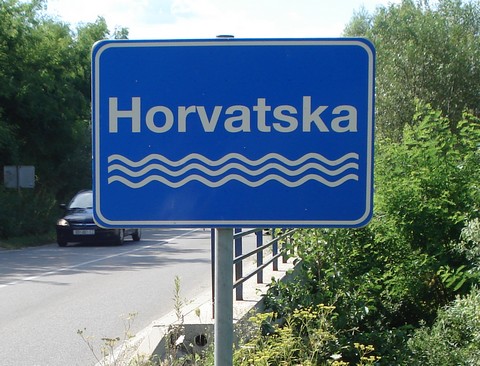
The brook of Horvatska near the village of Velika Horvatska. Another village of Horvatska exists near Klenovik, SW of the city of Varazdin north of Zagreb (many thanks to mr. Nenad Hancic, Duesseldorf, Germany, for this information).
Old Norwegian - Viking travel writers Sigurd, Ohtere, and Wulfstan from the 8th century mention the Kingdom of Krowataland on the territory of today's Ukraine. It has been investigated by a Czech historian and writer Karel Krocha.
Source www.croatianhistory.netEduard Miloslavic (Edward Lucas Miloslavich, 1884-1952) was a descendant of Dubrovnik emigrants to the USA, born in Oakland, California. His family returned to Dubrovnik in 1889. Ed studied medicine in Vienna, where he became a professor of pathology. In 1920 an invitation came from the Marquette University in Wisconsin, USA, to take the chair of the full professor of pathology, bacteriology and forensic medicine. In subsequent years "Doc Milo", as colleagues called him, inaugurated criminal pathology in the USA. As an outstanding specialist he was also involved in investigations of crimes perpetrated by al Capone gang. He was one of the founders of the International Academy for Forensic Medicine, member of many American and European scientific societies and academies, and also vice president of the Croatian Fraternal Union (CFU) in the USA.
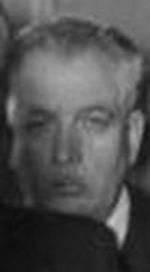
Eduard Miloslavic, photo from pl.wikipedia.org/wiki/Eduard_Miloslavić
According to an article published in Vjesnik, December 27, 1992, due to his testimonies related to Katyn wood tragedy, Prof. Miloslavic was sentenced to death in absence by the ex-Yugoslavia.
For more details see the CROWN - Croatian World Network.
See also hr.wikipedia.org/wiki/Eduard_Miloslavić in Croatian.
One of the great tragedies of the Second World War was the slaughter of 12,000 Polish officers in the Katyn wood (Poland) in 1940. Also a mass grave with more than thousand Ukrainian peasants and workers in Vinica (Ukraine), killed in 1938, was found by Germans. The Soviets accused Germans for these horrible crimes, and vice versa. Among leading European experts from 12 countries in pathological anatomy, two Croatian specialists were invited by the International Committee of the Red Cross to take part in the investigation in 1943: prof.dr. Eduard Miloslavic and prof.dr. Ljudevit Jurak. The result was that this cold-blooded mass slaughter was committed by the Soviets. Prof.dr. Miloslavic emigrated in time from ex-Yugoslavia to the USA by the end of WWII, while prof. Jurak remained in Zagreb, and was imprisoned on the demand of the Russian NKVD by the Yugoslav communists in May 1945. It was offered to him that he would not be accused as a military criminal and that his life would be spared if he declared that his report for the Red Cross Committee had been signed under pressure. He refused to do so, fully aware of the consequence.
For example, NKVD officers forced Bulgarian specialist Markov to withdraw his signature under the threat of death sentence.
Ljubica Stefan: Ljudevit Jurak - nasa rana i ponos.
Dr. Edward L. Miloslavich Croatian investigator of the Katyn Forest tragedy
Source www.croatianhistory.netPrva službena posjeta hrvatskog predsjednika dr. Franje Tuđmana nekoj stranoj zemlji bila je upravo posjeta Ukrajini, svibnja 1992.
G. Ivica Trnokop bio je prvi opunomoćeni veleposlanik Hrvatske u Ukrajini, a nakon njega je Đuro Vidmarović, prof.
G. Ivica Trnokop bio je tijekom 11 godina predsjednik Društva hrvatsko-ukrajinskog prijateljstva. Kasnije je tu funkciju preuzeo g. Franjo Gregorić, bivši predsjednik Vlade Republike Hrvatske.
Veleposlanstvo Ukrajine u Hrvatskoj nalazi se u Zagrebu, a u gradu Zadru postoji i ukrajinski konzulat.
Nikola Eterović, apostolski nuncij u Ukrajini od 1999., pripremio dolazak sv. oca Ivana Pavla II u Ukrajinu, generalni sekretar biskupske Sinode od 2004.
Taras Belej (rođen 1978. u Ivano-Frankivsku u Ukrajini) je 20. rujna 2010. u Zagrebu održao izložbu pod naslovom "Hrvatska u srcu" (Galerija Mirko Virius). Završio je umjetničku akadamiju u Kijevu, a kao četverogodišnji gluhi dječak došao je u Zagreb na rehabilitaciju u SUVAG. Naučio je slušati i govoriti, a danas vlada ukrajinskim, hrvatskim i engleskim jezikom. To je rezultat rehabilitacije u Zagrebu po verbotonalnoj metodi Petra Guberine. Više o Tarasu Beleju vidi u Naša Gazeta 74 [PDF, str. 9].
Zanimljivo da je Taras Belej svoju prvu izložbu u Kijevu imao upravo u Hrvatskoj ambasadi.
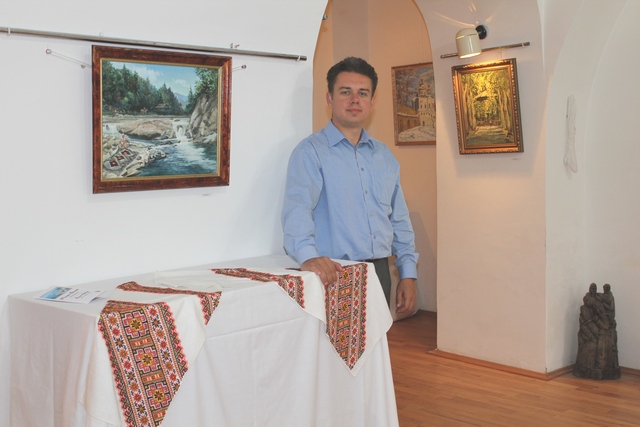
Taras Belej je s crtanjem također započeo kao dijete u Zagrebu, u Školi za umjetnost na Pantovčaku. Završio je Kiyjivsku nacionalnu akademiju likovnih umjetnosti i arhitekture. Organizirao je nekoliko izložaba hrvatskih likovnih umjetnika u Ukrajini, jednu i u Ukrajinskoj likovnoj akademiji u Kiyjivu, koje su održane pod visokim pokroviteljstvom i uz podršku Ukrajinske ambasade u Zagrebu.
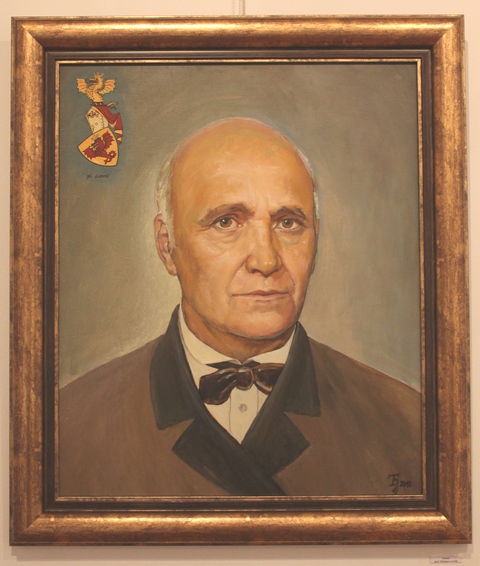
Taras Belej: Prof. Mladen Lovrić, ekspert za verbotonalnu metodu u SUVAG-u u Zagrebu,Â
veoma zaslužan za širenje te metode u Ukrajini
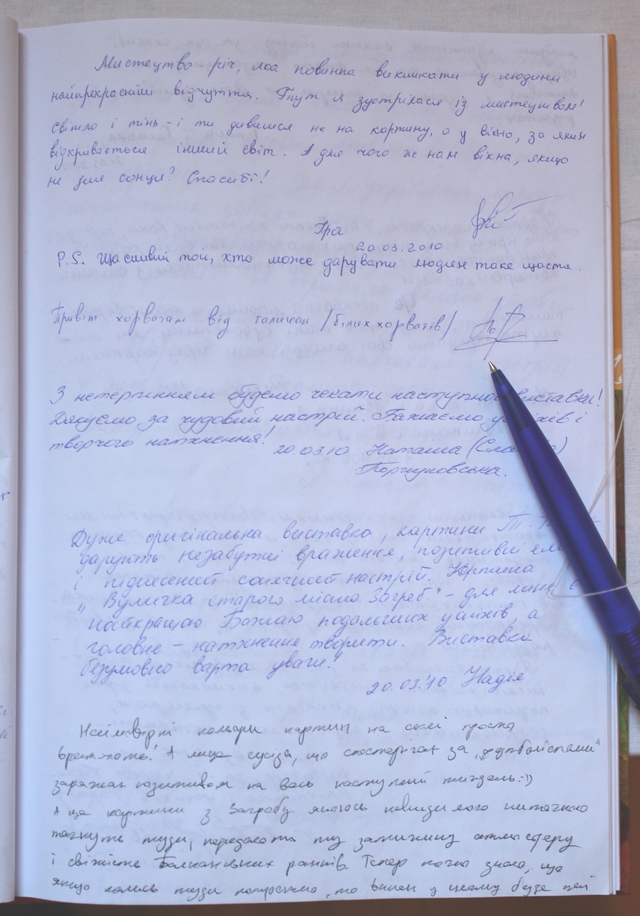
Knjiga utisaka tijekom izložbe Hrvatska u srcu u ukrajinskom gradu Ivano Frankivsku, ožujka 2010., na poticaj Tarasa Beleja.
Na izložbi su zajedno sudjelovali hrvatski i ukrajinski likovni umjetnici.

Privit horvatam vid galičan (bilih horvativ) - Pozdrav Hrvatima od Galičana (Bijelih Hrvata)
Galičani su stanovnici Ukrajine i Galicije, zapadne Ukrajine. Sjeverno od njih su Volinjani.Â
Zahvaljujem Katerini Kondratenko iz Kijiva na ovom pojašnjenju.
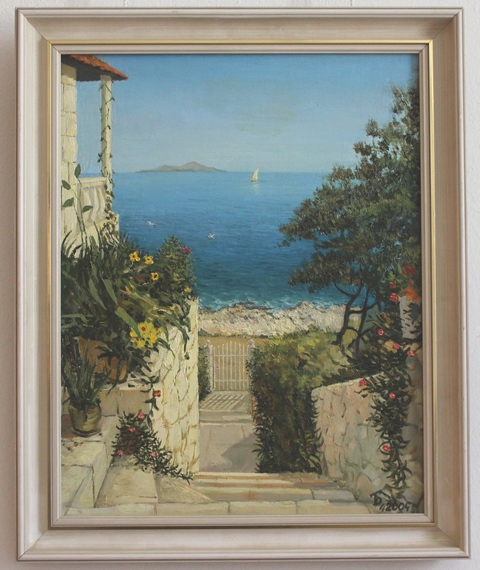
Taras Belej, a young Ukrainian painter: Moj Jadran (My Adriatic)
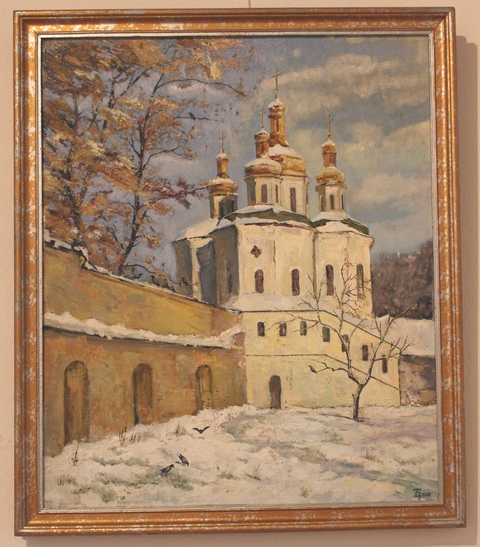
Taras Belej: Snijeg u Kijevu (The Snow in Kiyiv)
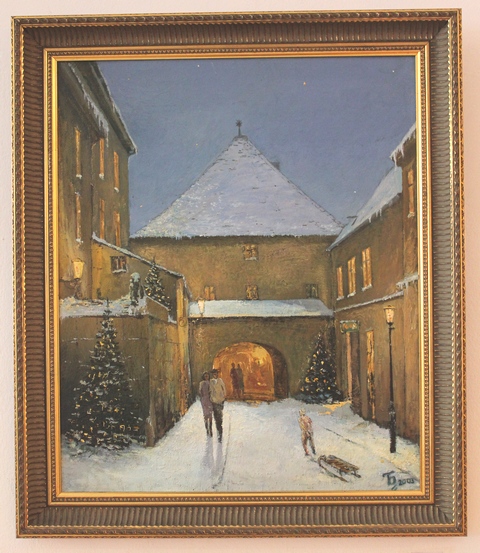
Taras Belej: Kamenita vrata u Zagrebu (The Stone Gate in Zagreb)

Taras Belej: Skalinska ulica u Zagrebu (The Skalinska Street in Zagreb)
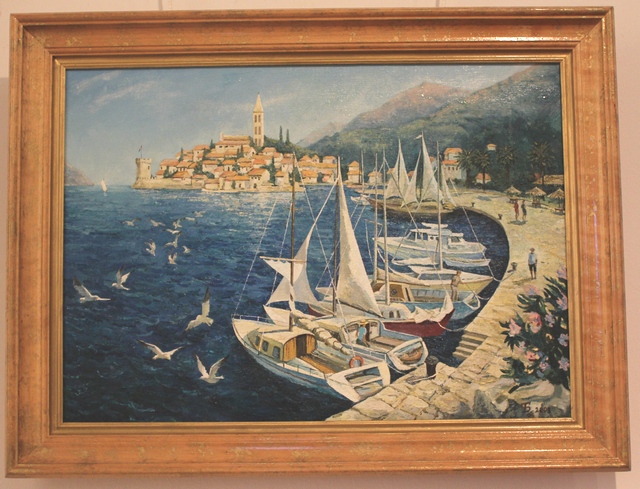
Taras Belej: Dalmacija u mom srcu (Dalmatia in My Heart)
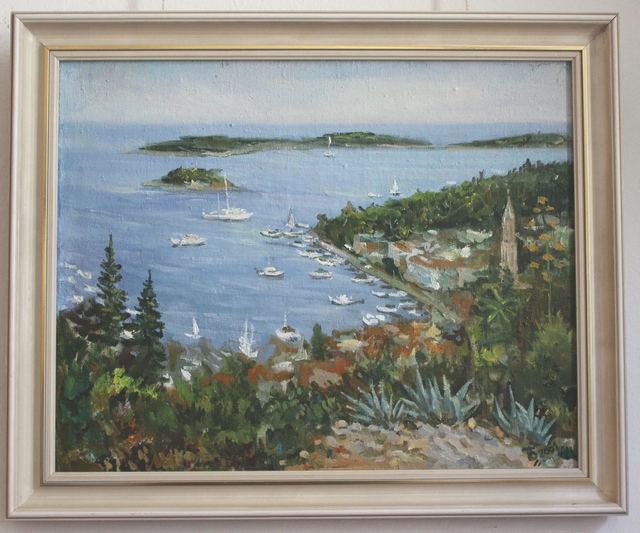
Taras Belej: Otok Hvar (The Island of Hvar, Croatia)
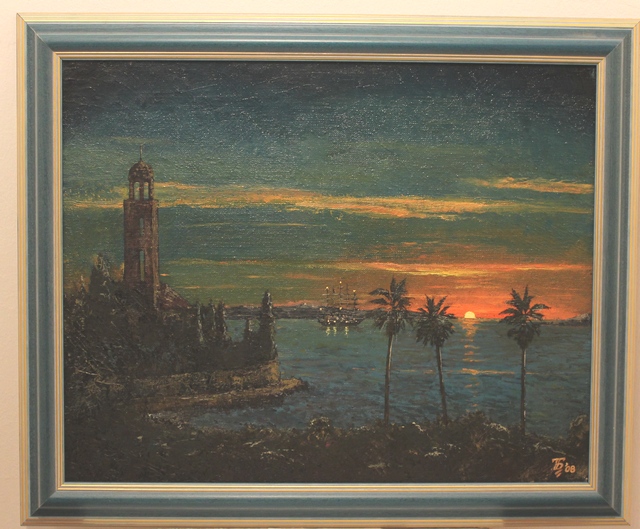
Taras Belej: Zalazak sunca na Hvaru (Sunset on the Island of Hvar)
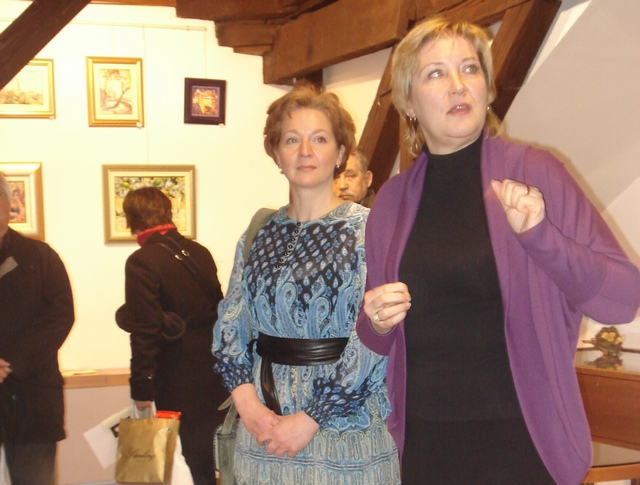
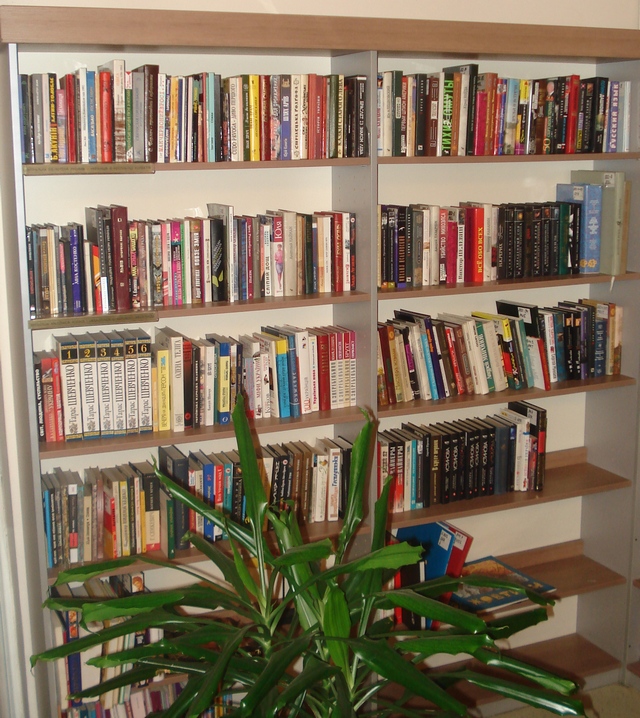
Ukrainian Corner in the City Library in Zagreb, Croatia, contains several hundred of book in Ukrainian language
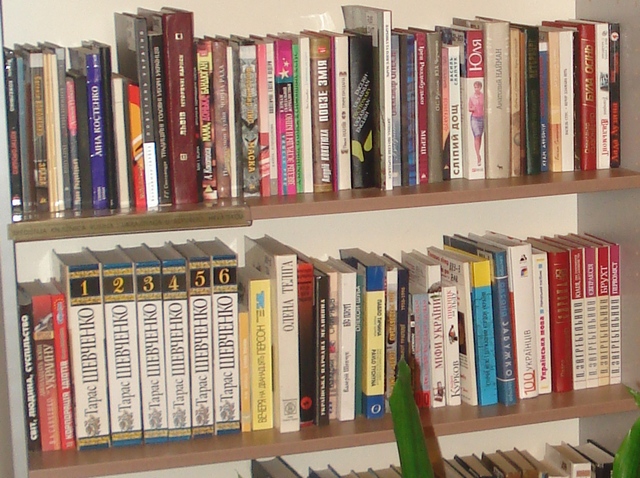
Središnja knjižnica Ukrajinaca i Rusina Republike Hrvatske
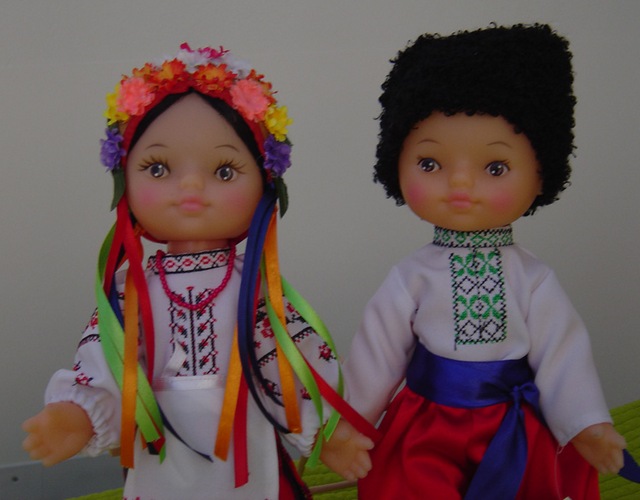
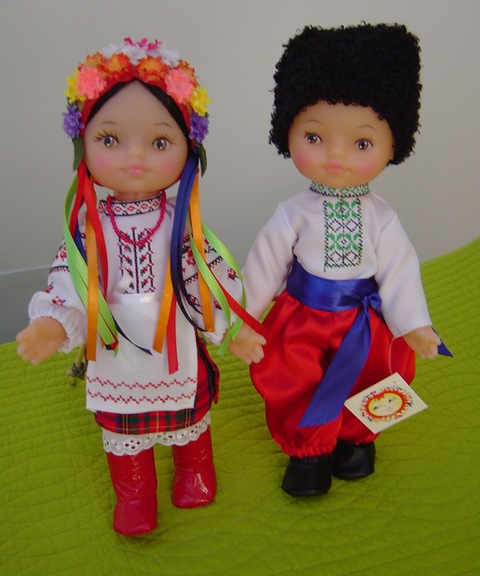

It was built in 1932 according to the project Juraj Denzler, Croatian architect.
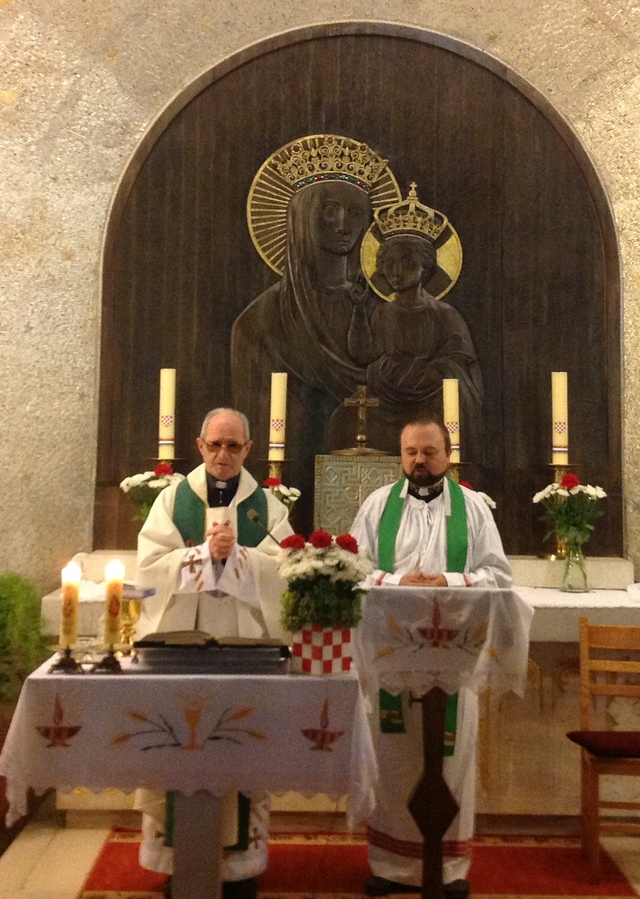
with his guest Rev. Oleh Hirnyk, Greek Catholic priest from Ukraine, representing Eastern Christianity.

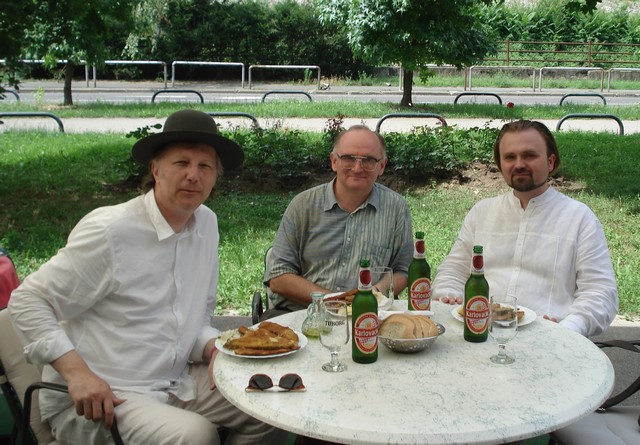
Ručak u Zagrebu: Nenad Bach (New York), Darko Žubrinić (Zagreb), Oleh Hirnyk (Lviv).
Vlč. Oleh Hirnyk je grkokatolički svećenik, a listopada 2013. služio je svetu misu zajedno
s isusovcem p. Josipom Rožmarićem u sljemenskoj Kapelici Kraljice Hrvata na Medvednici.
Formated for CROWN by Darko Žubrinić
Distributed by www.Croatia.org . This message is intended for Croatian Associations/Institutions and their Friends in Croatia and in the World. The opinions/articles expressed on this list do not reflect personal opinions of the moderator. If the reader of this message is not the intended recipient, please delete or destroy all copies of this communication and please, let us know!
